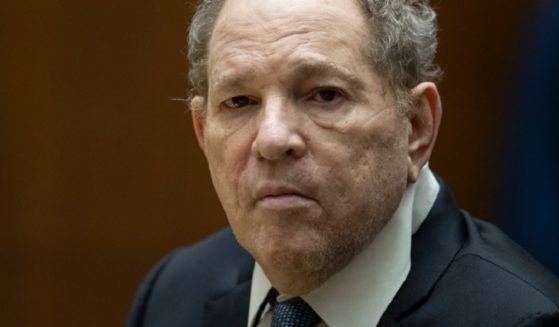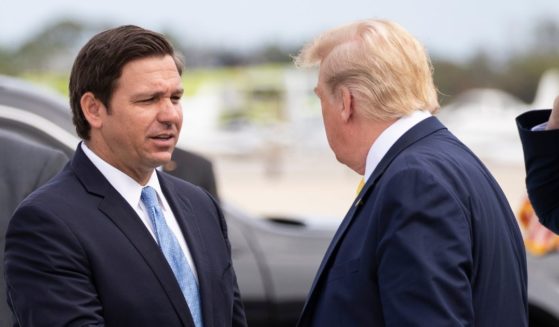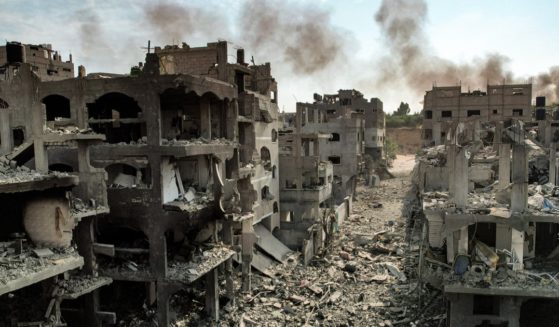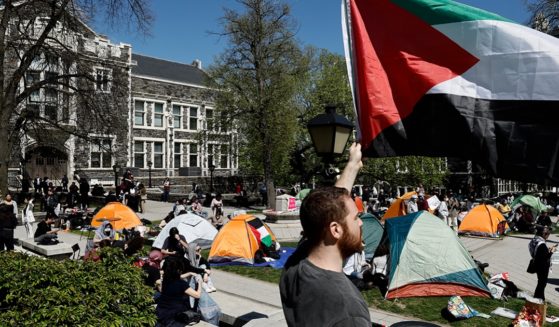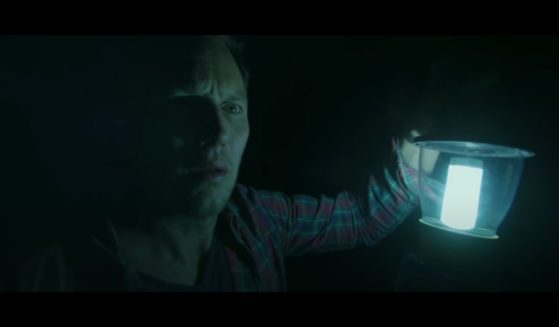As 85 MPH Winds Batter Arlington, Someone Stopped to Record What Was Happening at Tomb of the Unknown Soldier
Visiting the Tomb of the Unknown Soldier in Arlington National Cemetery near Washington, D.C., is a sobering experience.
A key element of the experience is watching a member of the Army’s 3rd U.S. Infantry Regiment — “The Old Guard” — marching 21 steps behind the tomb, pausing for 21 seconds to face east, another 21 seconds to face north, then retracing his or her 21 steps back down a mat.
They do it 24 hours a day, seven days a week.
But what happens when it rains? They do it 24 hours a day, seven days a week.
Snow? Twenty-one steps, pause facing east for 21 seconds, face north for 21 seconds, then back.
Wind? The same. Even when, as recently, winds in the D.C. area reached 60 to 85 mph — as indicated in the tweet below — the guard continued.
We couldn’t be prouder of the @USArmyOldGuard Soldiers who watch over the Tomb of the Unknown Soldier.
Winds reached 60-85 mph in the DC region. This sentinel leans into it and continues marching.
Honor. https://t.co/WcGAnSl8xL
— Arlington National Cemetery (@ArlingtonNatl) July 30, 2023
Twenty-one steps, 21 seconds, 21 seconds, then back. Whatever the weather.
The guard represents a kind of nobility, as does the monument being guarded.
The tomb contains the remains of an unidentified U.S. soldier from World War I interred there following a November 11, 1921, funeral ceremony.
The guard began in 1926 with soldiers from nearby Fort Myer placed to keep people from climbing or stepping on the tomb. Initially manned only during daylight, the guard extended to 24/7 in 1937.
In the days before improved technology, unidentified dead were common in wars, according to the official Arlington National Cemetery website.
Prior to the U.S. Civil War, American war dead were buried in mass graves.
Around the turn of the 20th century, there was a discovery of unidentified War of 1812 soldiers and sailors in a grave at the Washington Barracks. They were exhumed and buried at Arlington in 1905.
Also at Arlington are 2,111 unknown Union and Confederate soldiers killed in the Civil War, most from the nearby Manassas, Virginia, Battle of Bull Run and others from fighting in the surrounding countryside.
It’s estimated that nearly half of those killed in the Civil War were unidentified, according to the official Arlington Cemetery account.
U.S. soldiers killed in Europe during World War I were buried near where they fell, although their families were provided an option of having an exhumation to repatriate their remains.
In October 1921, four unidentified U.S. military individuals were exhumed, and one was selected for transport to Arlington.
As the unknown soldier lay in state in the U.S. Capitol Rotunda on November 10, some 90,000 people came to pay respects. The following day, a horse-drawn caisson and a procession took the unknown soldier to the state funeral at Arlington.
In 1958, the body of an unknown soldier from the Europe and North African theaters of World War II and another from the Pacific theater joined an unknown combatant from the Korean War. The three were buried in a crypt to the west of the World War I Unknown Soldier.
Despite the tragedy of some 58,000 American military people dying in the Vietnam War, only one was not identified and was placed at the Tomb of the Unknown Soldier in 1984. However, research and DNA evidence in 1998 identified the Vietnam casualty as 1st Lt. Michael Blassie, a pilot shot down in 1972. His remains then went to St. Louis.
The Vietnam War Unknown Soldier crypt remains vacant, but was dedicated in 1999 to service members missing in Vietnam.
Despite thousands of U.S. war dead never being identified, especially before the 20th century, the nation continues to focus grateful attention on them, especially the one at the Tomb of the Unknown Soldier.
And day and night, in all weather and conditions, the tomb guard remains.
Truth and Accuracy
We are committed to truth and accuracy in all of our journalism. Read our editorial standards.


